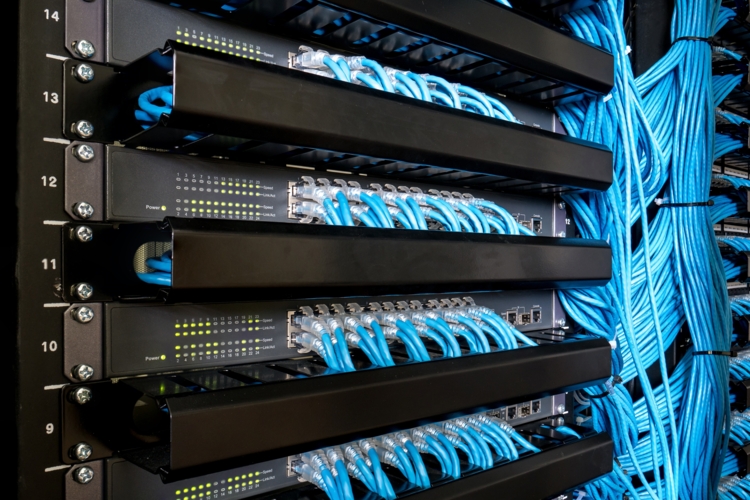Welcome to RUCKUS Networks, part of CommScope's world-leading portfolio of networking solutions. Learn more.
Wireless Networks: Understanding your Wireless Connection
Wireless networks have become integral to our daily lives, enabling us to access the internet, connect devices, and communicate wirelessly. From the convenience of Wi-Fi in our homes to the deployment of wireless networks in various industries, wireless technology has revolutionized how we stay connected.
In this comprehensive overview, we will delve into the essence of wireless networks and explore their evolution, different types, deployment methods, practical applications, and the fundamental properties and performance parameters that define them. So, let's dive in and unravel the intricacies of wireless networks.
Key takeaways
- Wireless networks provide a convenient wireless connection without cables using radio waves to transmit data between devices.
- Key setup components include routers, access points for extending coverage, and adapters to connect devices.
- Technology evolved from early radio innovations to today's Wi-Fi networks accessing internet resources.
- Different network types serve purposes, from connecting personal devices to enabling communication across regions.
- Industries utilize advantages like remote troubleshooting and scalability to enhance operations.
What is a wireless network?
A wireless network, as the name suggests, is a computer network that uses a wireless connection instead of a physical wired connection. They offer a flexible way for devices to communicate with each other, enabling seamless connectivity without the need for physical cables.
By utilizing radio waves, wireless networks transmit data between devices through routers, allowing us to access the internet, share files, and communicate wirelessly.
The essence of wireless connection
One of the most common technologies used in wireless networks is Wi-Fi, short for wireless fidelity. Wi-Fi allows electronic devices to connect to a wireless local area network (Wireless LAN), providing wireless access to the internet and other network resources. Wi-Fi networks can be secured with encryption protocols, ensuring the privacy of data transmission.
This technology has become an essential feature in homes, offices, and public areas, enabling wireless networking between devices like mobile phones and tablets within proximity of a centralized location.
What are the key components in a wireless setup?
A wireless network consists of various components, each playing a crucial role in the setup. The main elements include wireless routers, access points, and network adapters.
- Wireless routers, the network's central devices, manage the network and provide internet access to connected devices.
- Access points extend the wireless signal to cover larger areas or multiple floors, ensuring comprehensive network coverage.
- Wireless network adapters enable devices to connect to the network, allowing them to access the Internet and network resources seamlessly.
Proper configuration of these components makes up the most common type of wireless network system, essential for a robust wireless setup.
What is the difference between a wireless access point and a aireless router?
A wireless access point and router provide wireless connectivity, but they do so in slightly different ways and are typically used in other circumstances. A wireless access point is like a bridge, and the wireless router is like a multi-tasker.
Wireless Access Points connect wireless devices, like phones and laptops, to a wired network. They're usually used in large venues like businesses where one router can't cover everything.
Wireless routers connect devices and direct internet traffic. They are usually used in smaller environments like homes.
Evolution of wireless networks
Wireless networks have come a long way since their inception, with technological advancements and the ever-growing need for connectivity driving their evolution.
Let's take a closer look at the roots of the technology and the various types of networks that have emerged over the years.
Tracing the roots of wireless technology
The origins of wireless technology can be traced back to the late 19th century, with the invention of radio communication by pioneers such as Guglielmo Marconi. This laid the foundation for wireless telephony, radio broadcasting, and early wireless networking.
The emergence of Wi-Fi technology in the 1990s marked a significant milestone, revolutionizing wireless networks and paving the way for the connectivity we enjoy today.
Progression of underlying technology
The progression of underlying technologies has played a pivotal role in the evolution of WANs, enabling faster and more reliable communication. Advancements in radio frequency, signal processing, and network protocols have contributed to developing wireless networks as we know them today.
These advancements have allowed for the proliferation of wireless devices, the seamless integration of wireless connectivity into various industries, and the continuous innovation of wireless technologies that shape the future of wireless communication.
Here are some examples of wireless networks:
Personal area networks (PAN)
A PAN connects devices within an individual's workspace, typically covering a short distance. They allow devices such as smartphones, tablets, and wearable devices to communicate with each other wirelessly, facilitating personal device connectivity.
Wireless Local area networks (Wireless LAN)
Wireless (LANs) provide wireless connectivity within a specific area, such as a home, office, or building. They enable devices to share resources, access the internet, and communicate with each other wirelessly. WLANs are commonly used in homes, offices, and public places, offering seamless wireless networking.
Wide area networks (WAN)
WANs Enable wireless communication across large geographic areas, connecting multiple locations such as branch offices, business networks, and internet service providers (ISPs). WANs use various technologies, including a wireless connection, to provide network access over vast areas, ensuring connectivity between different locations.
Distinguishing between PAN, LAN, and WAN helps determine the appropriate wireless network type for different usage scenarios, taking into account the network's coverage, scalability, and network management requirements.
What is a cloud-based wireless network?
A cloud-based wireless network is a network infrastructure where the resources, management, and services are hosted in the cloud. Instead of having physical hardware and servers on-site, the network's data and services are stored and managed remotely on servers in a data center, which can be accessed over the Internet.
What are the advantages of a cloud-based wireless network?
Cloud-based wireless networks offer several advantages. For instance, it allows for remote monitoring and troubleshooting, which means network managers can identify and resolve issues quickly, minimizing downtime and reducing the need for on-site visits. This ultimately saves time and resources.
Is a wireless connection secure?
A wireless connection offers robust security features, including role-based access control, secure guest access, and real-time security updates. This helps maintain a safe network environment without significantly investing in additional security solutions.
Furthermore, cloud-based wireless networks are scalable and can easily be expanded or contracted based on a business's needs. This flexibility makes them ideal for companies with fluctuating network demands.
Lastly, providers of cloud-based wireless networks offer ongoing support and updates, ensuring that your network remains up to date with the latest features and security measures. This helps reduce the burden on your IT staff and allows them to focus on more strategic initiatives.
What is the role of wireless networks in industries?
Wireless networks enable businesses to provide secure connectivity, remote access, scalable growth, and streamlined operations. By leveraging cloud management, customizable guest access, and continuity, companies across industries use wireless technology to increase productivity, visibility, and competitive edge.
Hospitality: Wireless networks enhance guest experiences by providing seamless connectivity for entertainment, communication, and personalized services.
Multi-Dwelling Units (MDUs) provide reliable, high-speed internet access across multiple residential units, enhancing tenant satisfaction and retention.
Primary Education: They facilitate digital learning by connecting students and teachers to educational resources and platforms.
Higher Education: Wireless networks support research, online learning, and campus-wide connectivity, fostering a modern educational environment.
Large Public Venues: They provide high-density Wi-Fi deployment for seamless connectivity, enhancing visitor experiences and enabling data collection for personalized services.
Managed Service Providers: Wireless networks are integral to their service offerings, enabling them to manage and optimize network performance for their clients.
US Federal Government: Wireless networks support secure and efficient data transmission, enhancing communication and operations across various government agencies.
Conclusion
In closing, wireless networks have revolutionized connectivity, evolving from early radio breakthroughs to omnipresent Wi-Fi accessing resources and serving industries through remote troubleshooting and scalability. Various network types now provide purposes, Complete from linking individual devices to enabling comprehensive communication. Wireless technology will further enhance operations and experiences across sectors with continued innovation.
FAQs
What factors affect the internet connection in an office building?
Interference, signal-blocking constructions, high mobile device density overloading bandwidth, lack of seamless roaming, and dead zones. Full visibility networks with advanced wireless functionality and analytics optimize availability by mitigating issues through remote visibility and troubleshooting, boosting Wi-Fi access.










